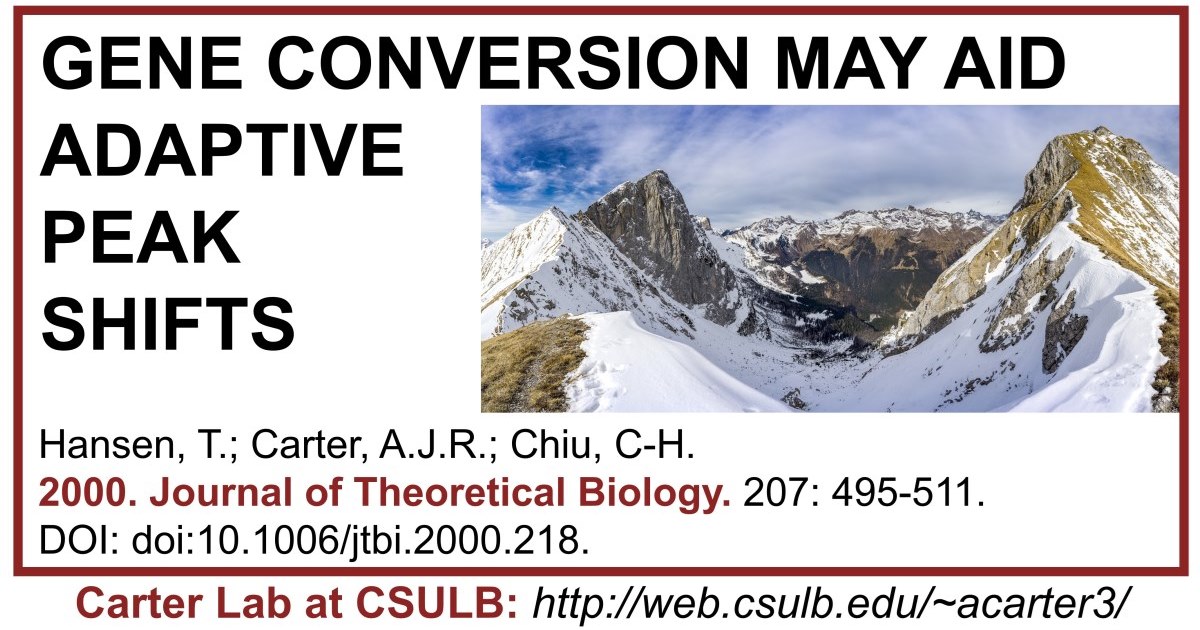ABSTRACT:
Gene conversion is often viewed as a homogenizing force that opposes adaptive evolution. Theobjective of this study is to suggest a potential role for gene conversion in adaptive evolution of proteins through aiding the transfer of a population from one adaptive peak to another. Our hypothesis starts with the observation that a tandem gene duplication may result in an extra gene copy that is released from selective constraints. In such cases, individually deleterious mutations may accumulate on the extra copy of the gene, and through gene conversion these mutations may subsequently be presented to the functioning gene for selection en masse. Thus, groups of mutations that jointly confer a selective advantage may regularly be made available for selection. We present a mathematical model of this process and identify the range of rates of gene conversion, gene duplication and mutation under which it may operate. The results indicate that the process may be biologically feasible if the rate of appearance of the potentially bene"cial mutations is not too small in relation to the rates of null mutation and of gene conversion. This process appears to be a possible mechanism for e!ecting adaptive peak shifts in large populations. We show that all the evolutionary steps in the proposed model may have occurred in the evolution of primate γ-globin genes. We suggest that hide-and-release mechanisms for genetic variation may constitute a more general principal of evolvability.
